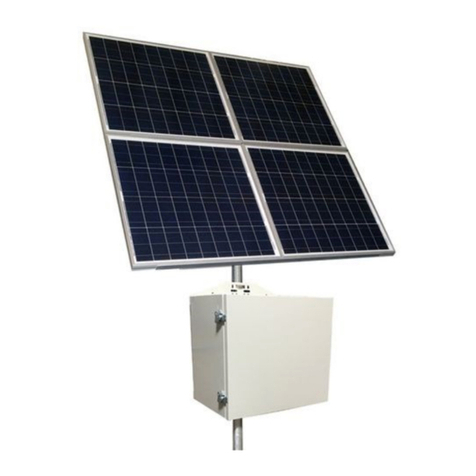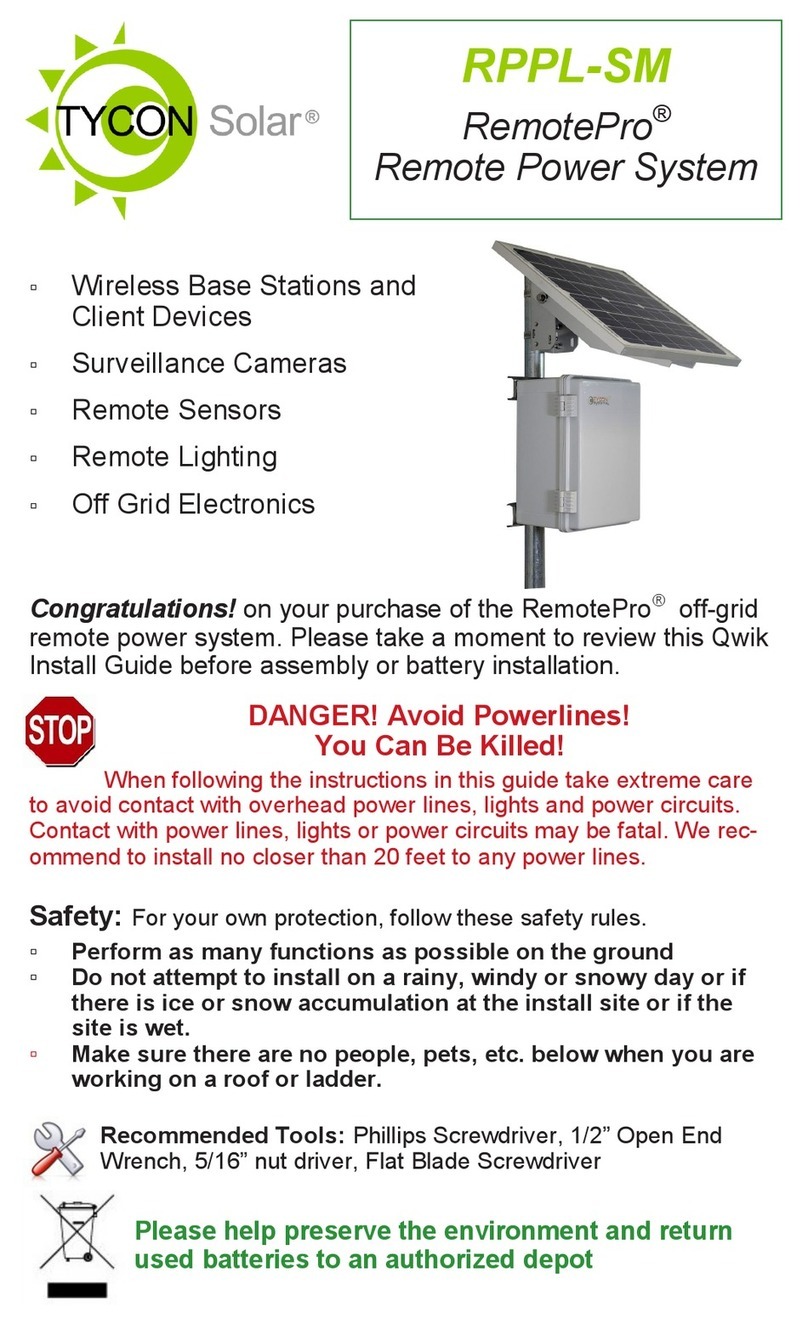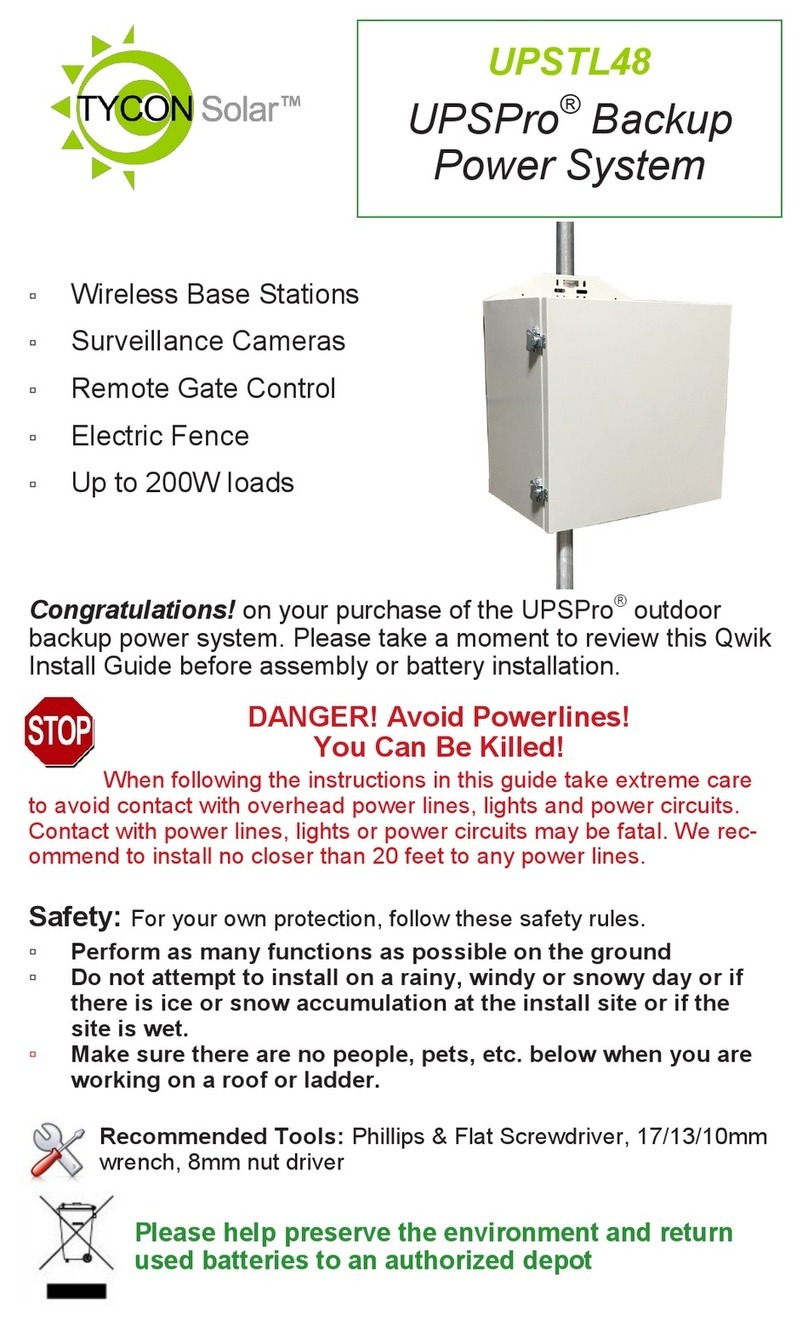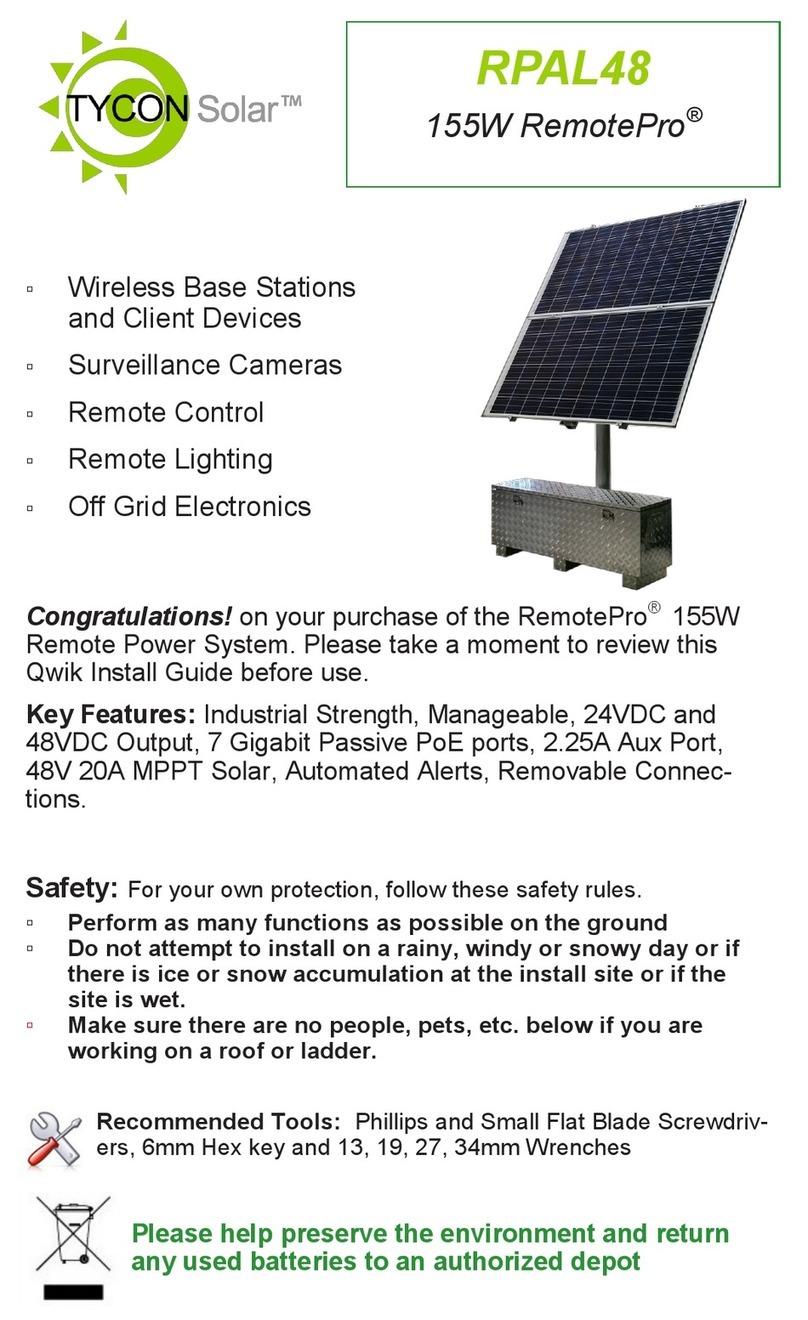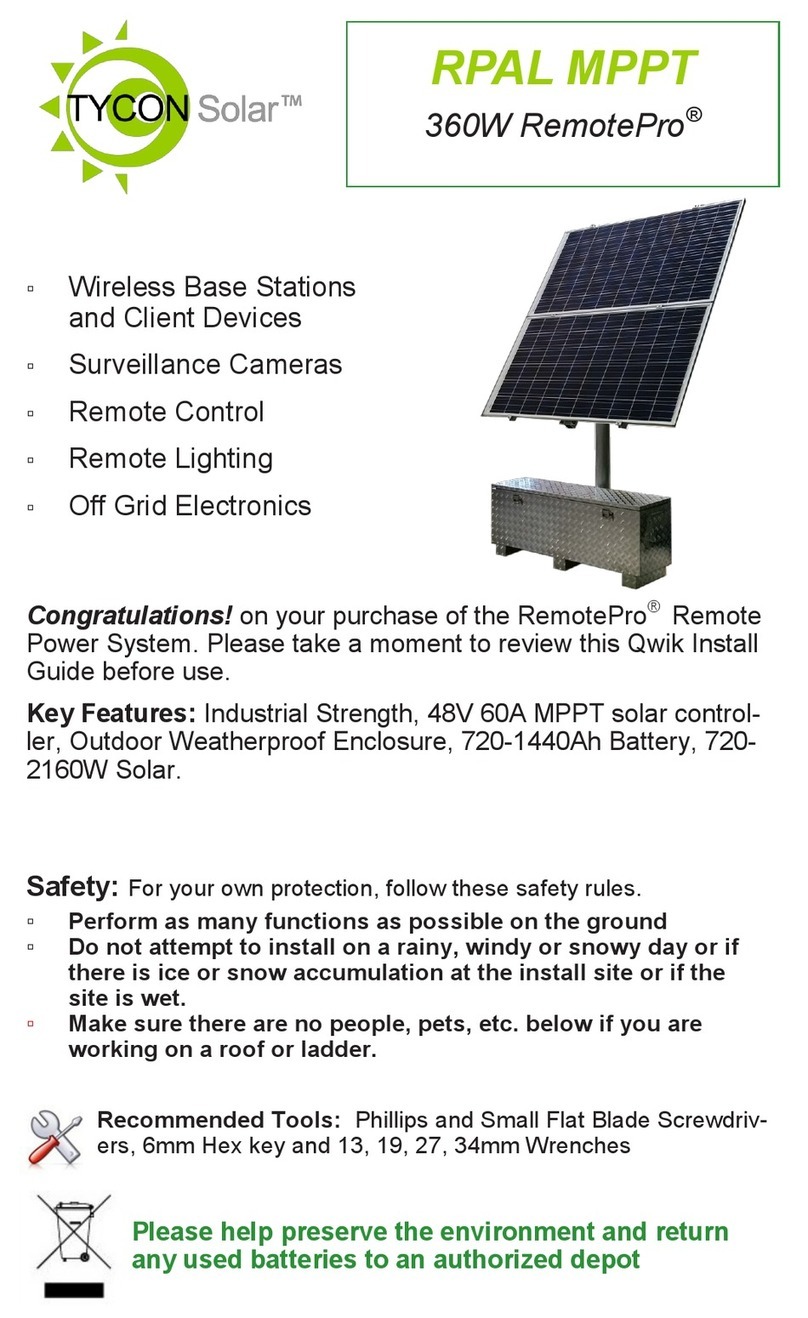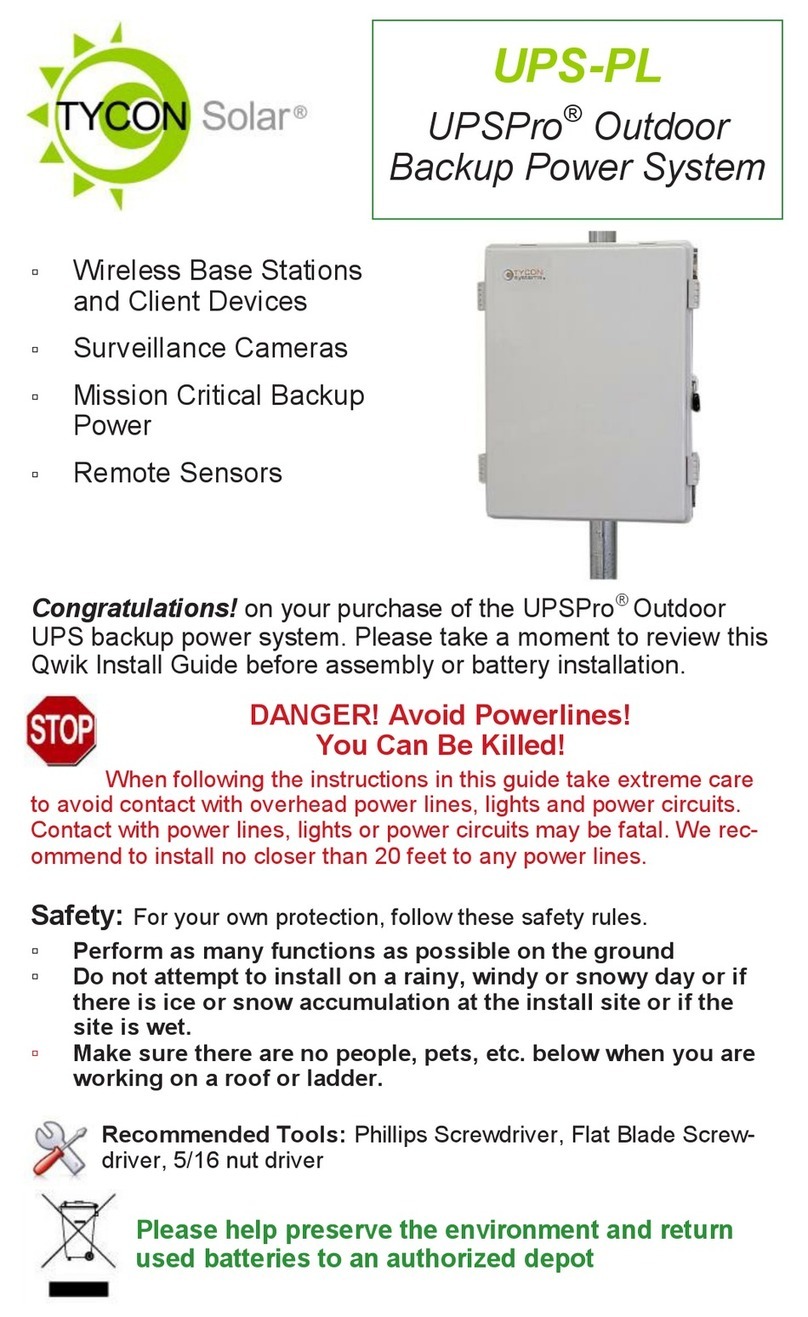7
STEP 11: Remove the battery cable fuse before connecting the batter-
ies to avoid any accidental shorting. Connect battery cables and
PowerVent fan cables to controller BAT connections, then to battery
terminals. Be sure to observe proper polarity. Double check wiring and
then re-install the battery cable fuse to energize the system, When a
fully charged battery is connected, the battery light should light on the
controller and the controller should power up.
CAUTION: Reverse polarity connections will damage the equip-
ment.
STEP 12: Route the solar panel cables out thru the feedthrus and in-
stall to the solar panel. Be sure to connect in the proper polarity, red
wire to + and black wire to –. Make sure connections are waterproofed.
STEP 13: Tighten all wire feedthrus. If they don’t tighten on a small
diameter wire, you can wrap some electrical tape around the wire in the
seal area to increase its diameter and make a better seal.
STEP 14: Make sure lid gasket is clean and free from any particles,
then carefully close the cover, making sure that wires are clear of the
seam and hinge area. Use the special key to close the two cover locks.
TECH CORNER
Additional Information you may find useful
1. CONTROLLER: The 12V controller turns off power to the load at
11V and reconnects when the battery reaches 12.5V. The 24V control-
ler turns off power at 22V and reconnects at 24.5V. This protects bat-
tery from overdischarge and increases battery life and performance.
2.Controller LEDS: There are 4 LED’s; Solar, Battery, Load and Error
for quick status check.
3.Fuse: There is a fuse in the battery cable (30A).The fuse is in-line
with battery power. If fuse is blown there was some sort of short in the
battery connection and the controller will appear dead. Replace with a
30A fuse.
4. CAPACITY: The RemotePro® RPST is rated at 25W to 50W contin-
uous power output with 6 hours of peak sun per day. (Depending on the
configuration).
5. VENTING: The enclosure is vented thru the PowerVent™. The fan is
thermostatically controlled and will turn on when the temperature inside
the enclosure exceeds 45° C.
6. BATTERY MAINTENANCE: The batteries used in the RemotePro®
systems don’t require any maintenance. They should last up to 5 years
in normal use.
NOTE: Never store batteries for a long time in a discharged state
or it will kill the battery. Especially in cold temperatures.


